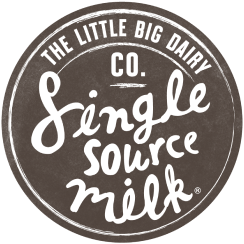
Dairy milk is a staple food throughout the world. However, in recent years, the popularity of plant milks, such as almond, has increased as many people look for dairy alternatives. The reasons are manifold; some consumers are cutting out animal products, while others do it in a bid to help the planet. But is almond milk more sustainable than dairy milk?
The environmental impact of milk production
We’ve all heard of the effects of dairy farming on the environment. In reality, assessing the environmental impact of milk production is very complex. Many variable factors need to be considered and production methods for dairy and plant-based milk are very different. However, it is possible to draw a few conclusions and it may surprise you to learn that almond milk has detrimental effects on the environment.
California is responsible for 80% of the world’s commercial almond production
That’s quite a statistic, isn’t it? With almonds in such high demand, they’re now grown on 11% of California’s irrigated cropland, mainly in the arid Central Valley. So, what does this mean for The Golden State? In the medium term, the land loses its variety of nutrients and becomes less resistant to soil depletion and plagues. Furthermore, almond crops require huge amounts of water. It’s reported that 130 pints of water are needed to produce one single glass of almond milk and studies show that almond milk production needs almost 20 times more water than dairy milk! It’s no wonder that California experiences issues with serious droughts.
But it’s not just the volume of water needed that’s a problem. The almond trees need to be pollinated. To satisfy the demand for larger almond crops, commercial beekeepers in the US send almost 70% of their bees to pollinate Californian almonds. Up to 30% of the bees die during the process.
So where do the rest of our almonds come from? The second-largest producer of almonds is Europe, particularly Spain, Italy, Portugal, Greece and then Tunisia and Morocco. These countries also experience problems with droughts.
Many of the almond’s nutrients are lost when it’s made into milk
During almond milk production, a large part of the almond’s nutrients is lost. The process leaves a pulp by-product which contains the fibre and other nutrients and, currently, this is not reused. So, while almond milk may taste great, it has limited nutritional benefits, which may be of concern if you are giving it to growing children.
Compare this to dairy milk. Dairy milk has around 3.4 grams of protein in 100ml, and this protein contains the full profile of essential acids. The same volume of almond milk has just 0.5 grams of protein. Dairy milk also contains Vitamin B12, a micronutrient that is missing in many vegan diets.
So, how about the sustainability of dairy milk?
Most of the environmental impacts of dairy milk production are linked to deforestation, fertiliser pollution, transportation emissions and, of course, methane production. However, there are ways to reduce the carbon footprint of cow’s milk through sustainable farming on pasture.
At The Little Big Dairy Co, we’re fully committed to employing and developing sustainable practices in line with the Australian Dairy Industry Sustainability Framework. We also graze our herds of beautiful Holsteins on our pastures along the banks of the Macquarie River. In short, we’re doing everything we can to make our milk as sustainable as possible.
The Bottom Line
There is no definitive answer to the question. There are so many variables to take into consideration, that there is no perfect choice. But we’re working hard to make our delicious dairy milk as sustainable as possible.






